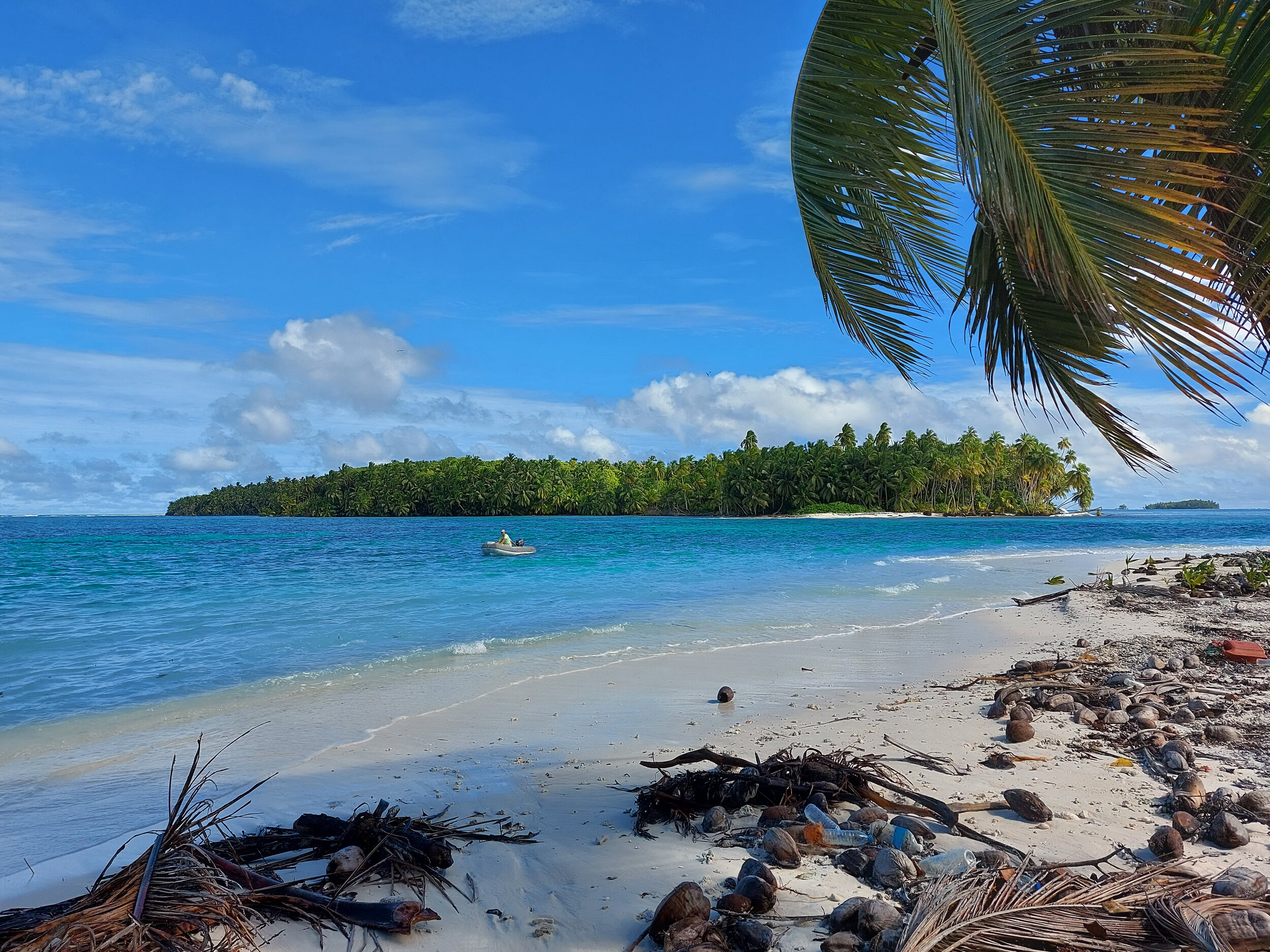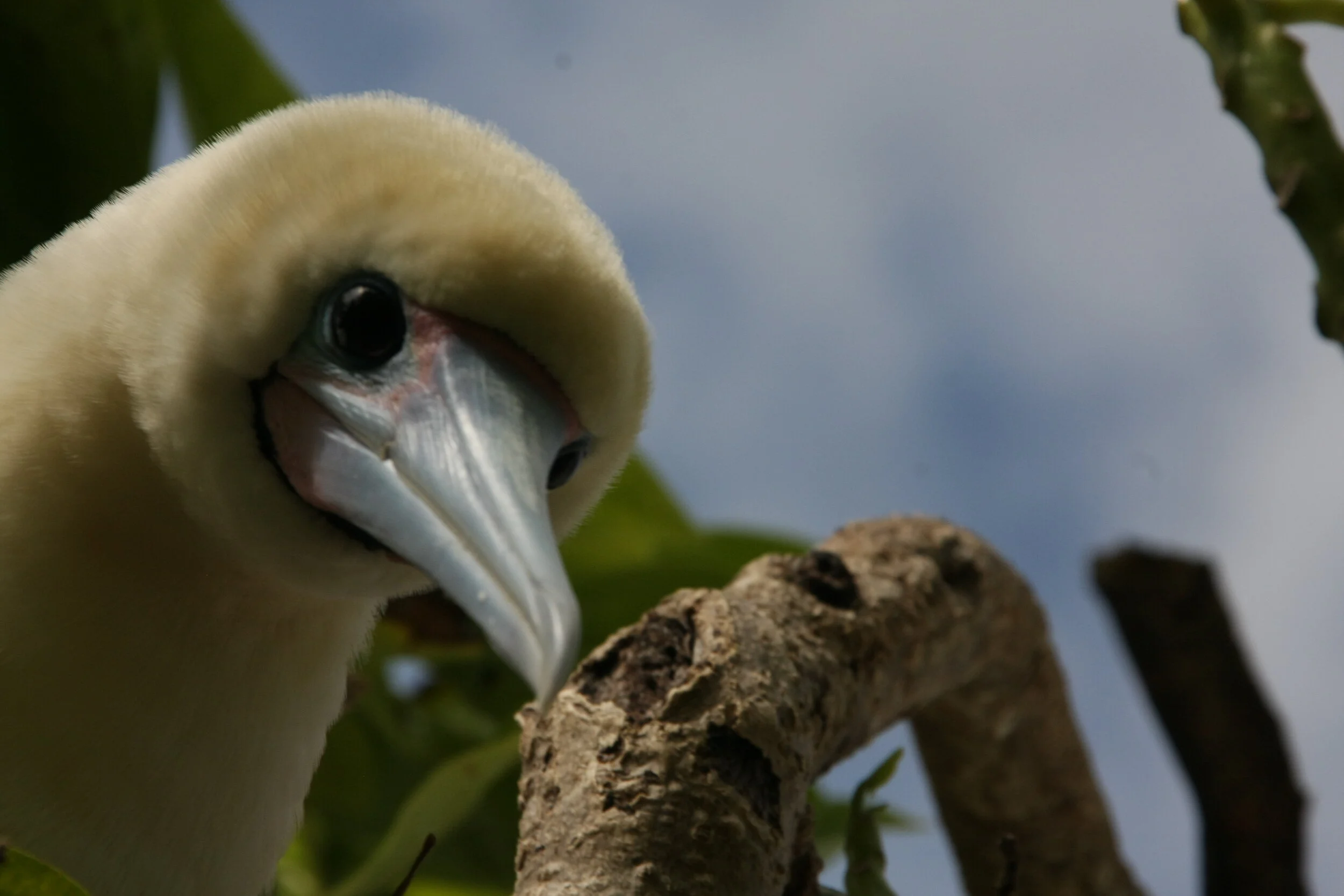The Chagos Diaries: #7 - What a Drag!

What a drag!
Tue Jul 28 2020
It’s been wet and windy here in Chagos the last few days, which has given us plenty of time to watch movies, play cards, and yes, do a whole bunch of (thankfully minor) boat maintenance.
But when you’re anchored in a coral atoll at the mercy of the trade winds, excitement is never far away, and it found us at midnight last night.
Anchoring in coral lagoons usually means deep, deep water (20m to 30m), with no way of knowing what’s on the bottom. There’s always a risk that your anchor will get caught around a coral bommie, making retrieving it extremely difficult, and raising the risk that your chain could chafe and snap.
So when you find a patch of sand in shallower water, you’re usually prepared to compromise on some other factors for the security it gives you. And so it is in our current location, where we were able to nose into the shallows and drop the anchor in just 4m on soft sand, and then reverse out so the boat is floating over the deeper 20 m coral.
Unfortunately this position means we have one massive bommie just 2 boat lengths away on our starboard side, and another about 4 boat lengths behind us. If we dragged towards either of them, we’d be aground, as the water is less than 2m deep over them.
It’s not ideal, but there’s no such thing as a perfect anchorage in this type of place, so it was a compromise we were prepared to make.
So last night, as we were watching a scary movie (Aliens, in case you were wondering, inspired by the Alien-like giant Coconut Crabs to be found here), it was blowing 20-25 knots steadily, as it had been for about 2 days, and our anchor was holding just fine.
But we were keeping an eye on things anyway, and when Jen went to bed around 11.30pm, I decided to stay up and keep my eye on the chart plotter for a bit, where I can see if the boat is moving.
It must have been some kind of intuition which made me do so. After all, we’d been anchored here for 5 days already, with no problems. And the wind was no stronger than it had been for the past 48 hours.
Or perhaps I was just feeling a little unsettled from watching the movie.
But anyway, as I sat and watched, suddenly we started moving, drifting backwards quite quickly, towards the bommie behind us.
We do have an audible anchor alarm, but I had spotted the movement before we reached the full drift distance that sets off the alarm.
Our plotter enables us to monitor our anchoring position by dropping a blue “breadcrumb” every 30 seconds. Over time, these form a nice arc showing how we’re swinging at anchor. If we start to drag, you start to see a line extending out the bottom of the arc.
You can see clearly where I’ve marked the bommie on our starboard side, and behind us, and our track as we stated to drag towards the bommie behind us!
“We’re dragging!”, I called out to Jen. Usually an extremely reluctant riser, Jen was up, clothed and in the cockpit within 30 seconds, by which point I had the engine running, the RADAR and AIS fired up, and the nav lights on.
We called the other two boats on the VHF to switch on their lights to help us orientate in the pitch black, and they lit up like Xmas trees immediately.
Sometimes when you drag, it’s just a minor adjustment before the anchor settles and digs back in. I decided to test that by reversing on it to see if it would hold us in our new position. No such luck, we started dragging backwards even more quickly.
“We need to raise and reset”, I said to Jen. She agreed, and headed out of the cockpit towards the bow immediately. The wind was a “sporty” 25 knots plus, so there was no way we could make ourselves heard above the din, and our usual hand signals don’t work so well in the dark, so she took the mobile VHF, and we communicated effectively as Jen talked me through the manoeuvres she needed me to perform to keep the bow above the anchor as we were raising it.
Once up, we had the small matter of picking our way between the other two boats and the two bommies nearby, all in the pitch black and howling wind. Eventually we came full circle and I called to Jen to drop the anchor again as I threw the engines into reverse to stop the boat.
There was no response on the VHF, and when I looked up to the bow, she wasn’t there.
I felt a brief moment of panic rise in my throat, and then she appeared in the cockpit – she’d come back to discuss options for a new anchoring position. Phew!
We were being blown away from our preferred spot towards the bommies again, so I took a few more moments to reposition the boat as Jen made her way back to the bow, and we dropped again.
Once we dug in we could see that we were about 10 metres closer to the two bommies than before, but at least we were holding. This would do for the night, and we could find a new, less risky spot, in the morning.
We threw the engine into hard astern to dig in extra thoroughly, and once we were satisfied that there was no more movement, Jen went off to bed. I stayed up for another hour, letting the adrenaline wash away while keeping a beady eye on the chart plotter, but by the time 2am swung round, I was happy, and I called it a night.







